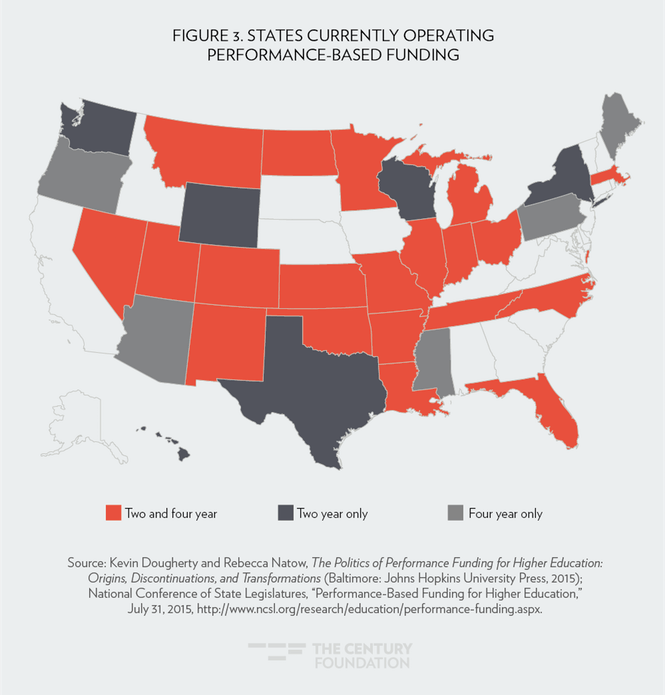Outcomes-Based University Funding

The first step to ensuring that all students have the opportunity to succeed is ensuring that student success is the primary goal of postsecondary institutions. For many years, states funded institutions based on the number of students they enrolled but 32 states have now shifted to funding institutions, at least partially, on completion outcomes rather than merely enrollment inputs. A well-designed outcomes-based funding policy tied to a state’s strategic plan can help create the internal conditions necessary for a state to focus on completion and increasing attainment. Outcomes-based funding programs encourage participating institutions to focus on completion and the steps necessary to get students there. Though outcomes-based funding alone cannot increase completion, this intervention provides a financial incentive for institutions to improve outcomes.
A growing body of research shows these models often lead to institution-level improvements in aligning with state goals to improve educational outcomes. States that distribute all or a significant portion of their state fiscal appropriations based on outcomes rather than enrollment, such as Tennessee and Ohio, are also highly involved in institution-level reforms that focus on interventions that show promise in improving completion and closing achievement gaps. Additionally, both states include weighting for better serving underserved populations, including students who are older, low income, a minority (in Ohio only), and otherwise at-risk. A well-designed funding formula that provides incentive funding for credentials earned by black, Hispanic, and underrepresented groups of students can help close equity gaps in postsecondary education.

The U.S. will not achieve its attainment goals if states and their higher education systems merely avoid increasing the equity gaps that already exist between student subgroups—we must intentionally close those gaps and offer incentives to implement proven-effective practices. As states continue to experiment with outcomes-based funding, we will learn how to use this lever more effectively to both close equity gaps and increase attainment for all students. By tracking the results of various outcomes-based funding initiatives in the states with close attention paid to the equity imperative, we have the opportunity to shape outcomes-based funding into a true Game Changer for higher education attainment AND equity.
Subscribe to Our Newsletter
Get Updates And Learn From The Best





